

Aikido in its present form, is a relatively young discipline, but with deep historical roots, stretching back to the eight century. The basic philosophy of Aikido is to avoid the attack and to use the power of an opponent against himself.
The founder of aikido, Morihei Ueshiba (1883-1969), spent many years of his life studying combat with sword and staff as well as unarmed combat techniques. He found that the various systems had many principles in common and combined their essence into a new sort of budo (budo being the common denominator for the Japanese martial arts), which he named Aikido. Only after WW2 did Aikido begin to spread outside a relatively narrow circle.
In Aikido training with Bokken (wooden sword) and Jo (wooden staff) is integrated with unarmed techniques using the same principles. Aikido does not lend itself to competition, as there is no attack - Aikido is purely defensive. Defense against most forms of attack can be taught. The daily training has a built-in system, where it is possible to practice the various techniques without hurting one another.
The original techniques are called aiki-jutsu (jutsu means technique). When developed by Ueshiba, he felt to have achieved something above the level of the originating techniques and changed the Jutsu into Do (path). Aiki-jutsu thus became Aiki-do. In training one strives towards greater personal fulfillment through mental and physical balance. Body and soul are one - When you feel well mentally, you automatically gain greater physical well being, and vice versa. Aikido is practices in order to feel well physically as well as mentally. The body is trained to be supple, strong and, coordinated, while the mental goal is to gain patience, relaxation, focus and to act intuitively. Traits we all need outside the dojo.
As mentioned, there is no competition in Aikido. No two persons are alike and we all come with different backgrounds. However, as you act from your own background, Aikido can be viewed as a competition with yourself. Aikido thus becomes meaningful for both women and men, without regard to age.
Aikido is much like art; like a musician or a chess player you achieve perfection. Each training session is merely another step in the quest for that goal. Aikido is schooling in concentration and endurance. The goal is not to hurt or ridicule an opponent, but merely to show him that he cannot win.

AikiWeb
A repository and dissemination point for aikido information.
When I started training aikido, I looked for books on the subject and had a hard time finding any. Therefore I have compiled a list of the books I have later found on the internet and otherwise. Descriptions of each book will be added as I find them. Comments are welcome. The links are to amazon.com for an easy purchase. The tiny Union Jacks will take you to their UK subsidiary.
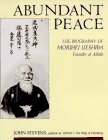 Abundant Peace : The Biography of Morihei Ueshiba, Founder of Aikido
Abundant Peace : The Biography of Morihei Ueshiba, Founder of Aikido
Focuses on the "how" and "why" of the quest of Morihei (the founder of Aikido-Japanes Martial Arts), concentrating on a discussion of the people, events, and ideas that most influenced the master.
 Aikido
Aikido
Kisshomaru Ueshiba is the son of Morihei Ueshiba O-Sensei, the founder of Aikido, and is the current Aikido Doshu (Master of the Way) and head of the Aikikkai organization.
The book is intended to be a help to beginners and explains basic things like breakfalls, stances, basic techniques and even goes as far as showing some unarmed defenses to attacks from jo and ken (stick and sword).
It also includes a chapter on the life of O-Sensei and how he came to create Aikido.
 Aikido : Techniques & Tactics (Martial Arts Series)
Aikido : Techniques & Tactics (Martial Arts Series)
From the Author: Aikido Techniques & Tactics is a concise look at the seldom addressed issue of adapting Aikido techniques to the close quarter situations encountered in a modern urban setting. The techniques portrayed are based on my own system of Tejitsu Aikido, which deals strictly with situations where footwork and large sweeping movements are impossible.
This book is geared toward the open-minded Aikido practitioner, martial arts students in general, as well as, anyone wishing to learn practical self-defense skills. It has been review by grandmasters from a vast array of systems and styles, who gave it high praise for accuracy, practicality, approach, and presentation. Having only been released in October of 1997, I have already been given a "Writer of the Year" award and a "Reader's Choice" award for 1998 by two separate martial arts halls of fame. It is my sincere wish that you enjoy this book and can come away with some valuable self-defense techniques.
Kenji Shimizu's "The Heavely Road" utilizes detailed photographs shot at interesting angles to shed light on aikido's most dynamic techniques. The neophyte and the serious practitioner, alike, will continue learning about the many nuances of this most subtle martial art even after reviewing the same techninque, many times. Photographs taken from above are particularly useful. Several practitioners of aikido whom I shared this book with later bought their own copies. I highly recommend "The Heavenly Road." It is one of my two favorite books that deal with the art of aikido.
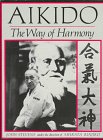 Aikido : The Way of Harmony
Aikido : The Way of Harmony
John Stevens proves once again that he is the foremost Western chronicler of this fascinating Japanese martial art called aikido. His historical analysis is admirable, and his access to the records, documents, photographs, relatives and friends of Morihei Ueshiba, the founder of aikido, makes this book all the more rich in depth and detail. What makes this book truly worthwhile, however, is the abundance of photographs of Shirata Sensei performing aikido techniques, both with and without weapons. There's much here for anyone already training in aikido to learn from. A must for any collector of aikido material.
 Aikido and Bokata
Aikido and Bokata
Although Bruce Tegner has lots of good things to show people regarding juijutsu and karate, on aikido he has nothing of any real consequence to contribute. He starts the book off by saying that Aikido doesn't really work for self-defense and should be approached solely for art and exercise. Anybody who has seen Steven Seagal in a movie recently knows that aikido can be very effective; what Tegner should say is that it can be awesomely effective, but to get to that level you have to practice for 4 or 5 years.
The author, tsugawar@ga2.so-net.or.jp , December 29, 1997.
To readers, My name is Tetsutaka Sugawara, the author of this book. We, Xing lujian, Mark B. Jones and me, preparing to next publication of vol. 2 in spring,1998, which includes the weapon training with Jo and Sword. We will introduce little more detail. The introduction is "the ancient furnaces and iron smelting" concerning to make swords in several countries, the Japanese tatara-method, Indian wootz steel and Chinese furnace in Han era, etc. Chapter one; The basic of jo and sword techniques--how to grip the weapon and the principles of attack and block movement. The circular motion with jo and bokken. (You can learn easily and train in your own dojo) Chaper Two; The Basic Chinese weapon techniques-- Chinese sword techniques, explaining with the sword vs sword, bo or naginata. Chapter Three and Four; The Kumijo technique, which include eight katas, the first four katas are hard style, next four katas are soft style. The every technique is sword vs jo. Chapter Five; Jo-ai techniques include the five kata. "Jo-ai" means jo vs jo partner practice. (These techniques are using the traditional Japanese and Chinese martial arts. You can enjoy them and continue its practice as life-long physical education for health.) Thank you very much.
 Aikido and the Dynamic Sphere : An Illustrated Introduction
Aikido and the Dynamic Sphere : An Illustrated Introduction
hangakusushi@inaka.com from Tulsa, Oklahoma , May 15, 1999
good introductory philosophy, excellent reference work
I used this book often when I was living in Japan and studying Aikido. My sensei emphasized the spiritual / philosophical aspects of Aikido more than other sensei I have studied under; those explanations and concepts can be somewhat esoteric even for native Japanese, so while I was at a linguistic disadvantage compared to the other students, this book gave me a good, broad overview of the mental / spiritual underpinnings of Aikido as a whole, so that I was not completely lost during his discussions. The artwork which is used to illustrate the many basic techniques is not complicated by any means; but it is perfectly suited to its purpose: to as clearly as possible show correct form and technique. I used this book for review purposes before a promotion test, or just to try and figure out what I was doing incorrectly or how I could improve. I wouldn't recommend using this or any other book in lieu of actual real training, but this book is an excellent supplement.
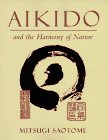 Aikido and the Harmony of Nature
Aikido and the Harmony of Nature
Saotome Shihan(one that is worthy to be followed) has written a very distintive and uncommon book. There is nothing about technique or fighting ways. The book is concerned with the spiritual side of Aikido and the importance of becoming a better person through its practice. That does not mean that Saotome Shihan is one of those dreamy-eyed, "new-age" people...He talks straight and proposes many ideas full of common sense. The book also is full of his fond memories of Ueshiba Sensei(founder of Aikido)and gives sound advice on how to improve our lives. All in all, a one of a kind book. You must have it in your martial arts library !
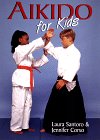 Aikido for Kids
Aikido for Kids
 Aikido for Life
Aikido for Life
A reader , April 22, 1997
A enjoyable book detailing the purpose of Aikido. I read this book on a train journey from Amsterdam to Brussels and I found it to be a delightful companion. The essence of the book is that Aikido is a Way of life (not just a philosophical way) and that Aikido is more than just a martial art or throwing people about. It is a easy book to read, and I must say that the drawings are the most noticeable and endearing aspect of this authors books. Simply, it is to be enjoyed and read again.
 Aikido in America
Aikido in America
 Aikido in Everyday Life : Giving in to Get Your Way
Aikido in Everyday Life : Giving in to Get Your Way
dan@bkm.ca from Moncton, New Brunswick, Canada , August 27, 1997
I picked up a copy of this book at a local yard sale thinking it would be filled with Aikido techniques . I got more than I bargained for and still can't figure out why anyone would even let go of it once they had read it. It has changed my life. Dobson/Miller put the idea of conflict and how to deal with it into its proper perspective. The techniques are not only informative but extremely practical. I began to use the philosphy of blending with attack immediatly. The results are that I am able to difuse angry situations quickly and build meaningful relationships with those around me. The explanations are clear and concise. I have since embarked on Aikikai Aikido Training. Thank you Dobson/Miller for your gift.
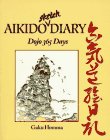 Aikido Sketch Diary : Dojo 365 Days
Aikido Sketch Diary : Dojo 365 Days
 The Aikido Student Handbook
The Aikido Student Handbook
 The Art of Peace : Teachings of the Founder of Aikido (Shambhala Pocket Classics)
The Art of Peace : Teachings of the Founder of Aikido (Shambhala Pocket Classics)
 Bruce Tegner's Complete Book of Self-Defense Judo, Jiu Jitsu, Karate, Savate, Yawara, Aikido, and Ate-Waza.
Bruce Tegner's Complete Book of Self-Defense Judo, Jiu Jitsu, Karate, Savate, Yawara, Aikido, and Ate-Waza.
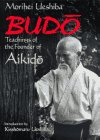 Budo : Teachings of the Founder of Aikido
Budo : Teachings of the Founder of Aikido
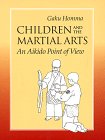 Children and the Martial Arts : An Aikido Point of View
Children and the Martial Arts : An Aikido Point of View
 Complete Aikido : Aikido Kyohan : The Definitive Guide to the Way of Harmony (Tuttle Martial Arts)
Complete Aikido : Aikido Kyohan : The Definitive Guide to the Way of Harmony (Tuttle Martial Arts)
Complete Aikido is a fascinating book on one man's study of aikido and is fascinating to read of a man that knew and studied with the Founder of Aikido. A must-have book encompassing one's study and how it relates to aikido and why he's important in being able to speak of the art as well as excellent photography of various techniques in Aikido. Highly recomended by many.
 Dynamic Aikido
Dynamic Aikido
 The Elements of Aikido (The Elements Of)
The Elements of Aikido (The Elements Of)
 The Essence of Aikido
The Essence of Aikido
 The Essence of Aikido : Spiritual Teachings of Morihei Ueshiba
The Essence of Aikido : Spiritual Teachings of Morihei Ueshiba
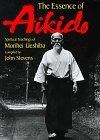 The Essence of Aikido : Spiritual Teachings of Morihei Ueshiba
The Essence of Aikido : Spiritual Teachings of Morihei Ueshiba
 The Hidden Roots of Aikido : Aiki Jujutsu Daitoryu
The Hidden Roots of Aikido : Aiki Jujutsu Daitoryu
The Daitoryu is a brutally effective fighting method thought to have been first developed more than a thousand years ago by members of the Japanese imperial family. It was then refined and honed in great secrecy through centuries of hand-to-hand combat by highly trained warriors. It was this tradition that Morihei Ueshiba spent years studying just before he set out on his own to found Aikido - which has in recent years become one of the world's most popular martial arts. The roots of Aikido are in the Daitoryu, and for that reason Aikido practitioners will want to learn all they can about this martial art. The Hidden Roots of Aikido is the first book to appear in English that offers a detailed visual introduction to techniques of the Daitoryu tradition. Heavily illustrated with approximately 800 photographs, it gives a clear, complete picture of the steps involved in about 90 techniques.
 The Intuitive Body : Aikido As a Clairsentient Practice
The Intuitive Body : Aikido As a Clairsentient Practice
 Invincible Warrior : An Illustrated Biography of Morihei Ueshiba, Founder of Aikido
Invincible Warrior : An Illustrated Biography of Morihei Ueshiba, Founder of Aikido
 Invincible Warrior : An Illustrated Biography of Morihei Ueshiba, Founder of Aikido
Invincible Warrior : An Illustrated Biography of Morihei Ueshiba, Founder of Aikido
The story of the life of Morihei Ueshiba (1883-1969), whose quest for the true meaning of warriorship led to the creation of Aikido--The Art of Peace. INVINCIBLE WARRIOR illuminates the man and his message. Illustrated with hundreds of photographs of Morihei in action.
 Keijutsukai Aikido Japanese Art of Self Defense
Keijutsukai Aikido Japanese Art of Self Defense
Very good book for the beginning Aikidoka. The book covers basic and advanced techniques.
 Ki in Daily Life
Ki in Daily Life
 Kodo Ancient Ways : Lessons in the Spiritual Life of the Warrior/Martial Artist (Literary Links to the Orient)
Kodo Ancient Ways : Lessons in the Spiritual Life of the Warrior/Martial Artist (Literary Links to the Orient)
This book is by Nobuyoshi Higashi 7d of the Japan Aikido Assn. It includes the San Kata and Yon Kata (3rd and 4th sets of classical forms) created by Kenji Tomiki, as well as some of Higashi's own self-defense forms. The descriptions are rough, and exclude finer points which would lead to proper execution of the techniques. This book would serve as a loose reference for Tomiki practitioners, and might be of histographic interest to others who study Aikido. One interesting point was relating the jo (stick) techniques to their origin as spear techniques, which makes sense out of the formal, thrusting attack. Tomiki's katas are remarkable in their comprehensiveness and depth of principle, and this is the only reference widely available.
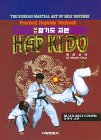 Practical Hapkido Textbook
Practical Hapkido Textbook
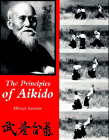 The Principles of Aikido
The Principles of Aikido
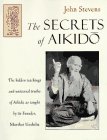 The Secrets of Aikido
The Secrets of Aikido
 The Secrets of Police Aikido : Controlling Tactics Used by Law Enforcement Professionals
The Secrets of Police Aikido : Controlling Tactics Used by Law Enforcement Professionals
 The Shambhala Guide to Aikido
The Shambhala Guide to Aikido
 Solo Forms of Karate, Tai Chi, Aikido and Kung Fu
Solo Forms of Karate, Tai Chi, Aikido and Kung Fu
 The Spirit of Aikido
The Spirit of Aikido
 The Spiritual Foundations of Aikido
The Spiritual Foundations of Aikido
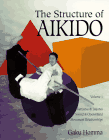 Structure of Aikido Kenjutsu & Taijutsu (Structure of Aikido, Vol 1)
Structure of Aikido Kenjutsu & Taijutsu (Structure of Aikido, Vol 1)
 Thorsons Principles of Aikido (Thorsons Principles)
Thorsons Principles of Aikido (Thorsons Principles)
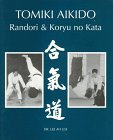 Tomiki Aikido: Randori & Koryu No Kata
Tomiki Aikido: Randori & Koryu No Kata
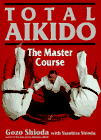 Total Aikido : The Master Course
Total Aikido : The Master Course
 Training With the Master : Lessons With Morihei Ueshiba, Founder of Aikido
Training With the Master : Lessons With Morihei Ueshiba, Founder of Aikido
 The Way of Aikido : Life Lessons from an American Sensai
The Way of Aikido : Life Lessons from an American Sensai
 Women in Aikido
Women in Aikido
Reviews on this book reign from utter hogwash to moderately useful. In my eyes, there is no difference between women and men in aikido other than in behavior.
 Aikido (Randall, Pamela. Martial Arts.)
Aikido (Randall, Pamela. Martial Arts.)
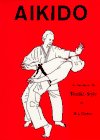 Aikido : An Introduction to Tomiki-Style : Randori-No-Kata & Variations
Aikido : An Introduction to Tomiki-Style : Randori-No-Kata & Variations
 Aikido Exercises for Teaching and Training
Aikido Exercises for Teaching and Training
Garry E. Howard (aaikidoi@indiana.net) from Brazil, Indiana , July 25, 1998
I found this book to be a must for all beginning aikidoka. I found A Beginner's Guide to Aikido to be most informative. It covers everything that a beginning aikido student needs to know. It is easy reading and has excellent information for future reference. I particularly enjoyed the comments by Aikido Masters Steven Seagal, Mitsunari Kanai and Mitsugi Saotome respectively. This text is recommended for my students study.
 Budo : Teachings of the Founder of Aikido
Budo : Teachings of the Founder of Aikido
 Budo Training in Aikido
Budo Training in Aikido
 Doing Aikido
Doing Aikido
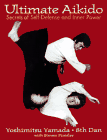 Ultimate Aikido : Secrets of Self-Defense and Inner Power
Ultimate Aikido : Secrets of Self-Defense and Inner Power
 Corporate Aikido : Unleash the Potential Within Your Company to Neutralize Competition and Seize Growth
Corporate Aikido : Unleash the Potential Within Your Company to Neutralize Competition and Seize Growth![]()
Robert Pino / Hardcover / Published 1998
ISBN 0-0705-0240-4
 Leadership Aikido : 6 Business Practices That Can Turn Your Life Around
Leadership Aikido : 6 Business Practices That Can Turn Your Life Around
 Leadership Aikido : 6 Business Practices to Turn Around Your Life
Leadership Aikido : 6 Business Practices to Turn Around Your Life
 Principles of Aikido
Principles of Aikido![]()
Principles of Aikido (1994)
Shihan Mitsu Saotome, et al. / Published 1995
Bill Henry from Washington, D.C. , June 19, 1999. Excellent Visualization Tool. As a beginning aikido student, I found this video most helpful in examining techniques (slow motion on my VCR) in detail. The video demonstrates approximately twenty aikido techniques (several times each). I recommend it.
A viewer from USA , May 19, 1999. Excellent video! This video was recommended to me by many other people. Clear english narration with good slow-mo's to show the technique. This is not a "seminar" video, but clearly a video shot just for the viewer. This video along with the book "principals of Aikido" are a great study source. Enjoy!
 The Art of Aikido
The Art of Aikido
Back to previous page |
Back to Ping's Homepage |